SLLS867K September 2007 – October 2015 ISO7230C , ISO7230M , ISO7231C , ISO7231M
PRODUCTION DATA.
- 1 Features
- 2 Applications
- 3 Description
- 4 Revision History
- 5 Device Comparison Table
- 6 Pin Configuration and Functions
-
7 Specifications
- 7.1 Absolute Maximum Ratings
- 7.2 ESD Ratings
- 7.3 Recommended Operating Conditions
- 7.4 Thermal Information
- 7.5 Electrical Characteristics: VCC1 and VCC2 at 5-V
- 7.6 Electrical Characteristics: VCC1 at 5-V, VCC2 at 3.3-V
- 7.7 Electrical Characteristics: VCC1 at 3.3-V, VCC2 at 5-V
- 7.8 Electrical Characteristics: VCC1 and VCC2 at 3.3 V
- 7.9 Power Dissipation Characteristics
- 7.10 Switching Characteristics: VCC1 and VCC2 at 5-V
- 7.11 Switching Characteristics: VCC1 at 5-V, VCC2 at 3.3-V
- 7.12 Switching Characteristics: VCC1 at 3.3-V and VCC2 at 5-V
- 7.13 Switching Characteristics: VCC1 and VCC2 at 3.3-V
- 7.14 Typical Characteristics
- 8 Parameter Measurement Information
- 9 Detailed Description
- 10Application and Implementation
- 11Power Supply Recommendations
- 12Layout
- 13Device and Documentation Support
- 14Mechanical, Packaging, and Orderable Information
パッケージ・オプション
デバイスごとのパッケージ図は、PDF版データシートをご参照ください。
メカニカル・データ(パッケージ|ピン)
- DW|16
サーマルパッド・メカニカル・データ
発注情報
7 Specifications
7.1 Absolute Maximum Ratings(1)
| MIN | MAX | UNIT | |||||
|---|---|---|---|---|---|---|---|
| VCC | Supply voltage(2), VCC1, VCC2 | –0.5 | 6 | V | |||
| VI | Voltage at INx, OUTx, ENx | –0.5 | VCC + 0.5(3) | V | |||
| IO | Output current | –15 | 15 | mA | |||
| TJ | Maximum junction temperature | 170 | °C | ||||
| Tstg | Storage temperature | –65 | 150 | °C | |||
(1) Stresses beyond those listed under absolute maximum ratings may cause permanent damage to the device. These are stress ratings only and functional operation of the device at these or any other conditions beyond those indicated under Recommended Operating Conditions is not implied. Exposure to absolute-maximum-rated conditions for extended periods may affect device reliability.
(2) All voltage values are with respect to network ground terminal and are peak voltage values.
(3) Maximum voltage must not exceed 6 V.
7.2 ESD Ratings
| VALUE | UNIT | |||
|---|---|---|---|---|
| V(ESD) | Electrostatic discharge | Human body model (HBM), per ANSI/ESDA/JEDEC JS-001(1) | ±4000 | V |
| Charged-device model (CDM), per JEDEC specification JESD22-C101(2) | ±1000 | |||
| Machine model (MM), ANSI/ESDS5.2-1996 | ±200 | |||
(1) JEDEC document JEP155 states that 500-V HBM allows safe manufacturing with a standard ESD control process.
(2) JEDEC document JEP157 states that 250-V CDM allows safe manufacturing with a standard ESD control process.
7.3 Recommended Operating Conditions
| MIN | NOM | MAX | UNIT | |||
|---|---|---|---|---|---|---|
| VCC1, VCC2 | Supply voltage - 3.3-V Operation | 3.15 | 5.5 | V | ||
| Supply voltage - 5-V Operation | ||||||
| IOH | High-level output current | –4 | mA | |||
| IOL | Low-level output current | 4 | mA | |||
| tui | Input pulse width | ISO723xC | 40 | ns | ||
| ISO723xM | 6.67 | 5 | ||||
| 1/tui | Signaling rate | ISO723xC | 0 | 30(1) | 25 | Mbps |
| ISO723xM | 0 | 200(1) | 150 | |||
| VIH | High-level input voltage (IN) | ISO723xM | 0.7 VCC | VCC | V | |
| VIL | Low-level input voltage (IN) | 0 | 0.3 VCC | |||
| VIH | High-level input voltage (IN) (EN on all devices) | ISO723xC | 2 | 5.5 | V | |
| VIL | Low-level input voltage (IN) (EN on all devices) | 0 | 0.8 | |||
| TA | Ambient temperature | -40 | 25 | 125 | °C | |
| TJ | Junction temperature | 150 | °C | |||
| H | External magnetic field-strength immunity per IEC 61000-4-8 and IEC 61000-4-9 | 1000 | A/m | |||
(1) Typical sigalling rate under ideal conditions at 25°C.
7.4 Thermal Information
| THERMAL METRIC(1) | ISO7230C, ISO7230M ISO7231C, ISO7231M |
UNIT | ||
|---|---|---|---|---|
| DW (SOIC) | ||||
| 16 PINS | ||||
| RθJA | Junction-to-ambient thermal resistance | 168 | °C/W | |
| 77.3 | °C/W | |||
| RθJC(top) | Junction-to-case (top) thermal resistance | 39.5 | °C/W | |
| RθJB | Junction-to-board thermal resistance | 41.9 | °C/W | |
| ψJT | Junction-to-top characterization parameter | 13.5 | °C/W | |
| ψJB | Junction-to-board characterization parameter | 41.9 | °C/W | |
| RθJC(bot) | Junction-to-case (bottom) thermal resistance | n/a | °C/W | |
(1) For more information about traditional and new thermal metrics, see the Semiconductor and IC Package Thermal Metrics application report, SPRA953.
7.5 Electrical Characteristics: VCC1 and VCC2 at 5-V(1)
over recommended operating conditions (unless otherwise noted)| PARAMETER | TEST CONDITIONS | MIN | TYP | MAX | UNIT | ||
|---|---|---|---|---|---|---|---|
| SUPPLY CURRENT | |||||||
| ICC1 | ISO7230C/M | Quiescent | VI = VCCI or 0 V, all channels, no load, EN at 3 V |
1 | 3 | mA | |
| 25 Mbps | 7 | 9.5 | |||||
| ISO7231C/M | Quiescent | VI = VCCI or 0 V, all channels, no load, EN1 at 3 V, EN2 at 3 V |
6.5 | 11 | mA | ||
| 25 Mbps | 11 | 17 | |||||
| ICC2 | ISO7230C/M | Quiescent | VI = VCCI or 0 V, all channels, no load, EN at 3 V |
15 | 22 | mA | |
| 25 Mbps | 17 | 24 | |||||
| ISO7231C/M | Quiescent | VI = VCCI or 0 V, all channels, no load, EN1 at 3 V, EN2 at 3 V |
13 | 20 | mA | ||
| 25 Mbps | 17.5 | 27 | |||||
| ELECTRICAL CHARACTERISTICS | |||||||
| IOFF | Sleep mode output current | ENx at 0 V, single channel | 0 | μA | |||
| VOH | High-level output voltage | IOH = –4 mA, See Figure 8 | VCCO – 0.8 | V | |||
| IOH = –20 μA, See Figure 8 | VCCO – 0.1 | ||||||
| VOL | Low-level output voltage | IOL = 4 mA, See Figure 8 | 0.4 | V | |||
| IOL = 20 μA, See Figure 8 | 0.1 | ||||||
| VI(HYS) | Input voltage hysteresis | 150 | mV | ||||
| IIH | High-level input current | INx at VCCI | 10 | μA | |||
| IIL | Low-level input current | INx at 0 V | –10 | ||||
| CI | Input capacitance to ground | INx at VCCI, VI = 0.4 sin (4E6πt) | 2 | pF | |||
| CMTI | Common-mode transient immunity | VI = VCCI or 0 V, See Figure 11 | 25 | 50 | kV/μs | ||
7.6 Electrical Characteristics: VCC1 at 5-V, VCC2 at 3.3-V(1)
over recommended operating conditions (unless otherwise noted)| PARAMETER | TEST CONDITIONS | MIN | TYP | MAX | UNIT | |||
|---|---|---|---|---|---|---|---|---|
| SUPPLY CURRENT | ||||||||
| ICC1 | ISO7230C/M | Quiescent | VI = VCCI or 0 V, all channels, no load, EN at 3 V | 1 | 3 | mA | ||
| 25 Mbps | 7 | 9.5 | ||||||
| ISO7231C/M | Quiescent | VI = VCCI or 0 V, all channels, no load, EN1 at 3 V, EN2 at 3 V |
6.5 | 11 | mA | |||
| 25 Mbps | 11 | 17 | ||||||
| ICC2 | ISO7230C/M | Quiescent | VI = VCCI or 0 V, all channels, no load, EN at 3 V | 9 | 15 | mA | ||
| 25 Mbps | 10 | 17 | ||||||
| ISO7231C/M | Quiescent | VI = VCCI or 0 V, all channels, no load, EN1 at 3 V, EN2 at 3 V |
8 | 12 | mA | |||
| 25 Mbps | 10.5 | 16 | ||||||
| ELECTRICAL CHARACTERISTICS | ||||||||
| IOFF | Sleep mode output current | ENx at 0 V, Single channel | 0 | μA | ||||
| VOH | High-level output voltage | IOH = –4 mA, See Figure 8 | ISO7230 | VCCO – 0.4 | V | |||
| ISO7231 (5-V side) |
VCCO – 0.8 | |||||||
| IOH = –20 μA, See Figure 8 | VCCO – 0.1 | |||||||
| VOL | Low-level output voltage | IOL = 4 mA, See Figure 8 | 0.4 | V | ||||
| IOL = 20 μA, See Figure 8 | 0.1 | |||||||
| VI(HYS) | Input voltage hysteresis | 150 | mV | |||||
| IIH | High-level input current | INx at VCCI | 10 | μA | ||||
| IIL | Low-level input current | INx at 0 V | –10 | |||||
| CI | Input capacitance to ground | INx at VCCI, VI = 0.4 sin (4E6πt) | 2 | pF | ||||
| CMTI | Common-mode transient immunity | VI = VCCI or 0 V, See Figure 11 | 25 | 50 | kV/μs | |||
7.7 Electrical Characteristics: VCC1 at 3.3-V, VCC2 at 5-V(1)
over recommended operating conditions (unless otherwise noted)| PARAMETER | TEST CONDITIONS | MIN | TYP | MAX | UNIT | |||
|---|---|---|---|---|---|---|---|---|
| SUPPLY CURRENT | ||||||||
| ICC1 | ISO7230C/M | Quiescent | VI = VCCI or 0 V, all channels, no load, EN at 3 V | 0.5 | 1 | mA | ||
| 25 Mbps | 3 | 5 | ||||||
| ISO7231C/M | Quiescent | VI = VCCI or 0 V, all channels, no load, EN1 at 3 V, EN2 at 3 V |
4.5 | 7 | mA | |||
| 25 Mbps | 6.5 | 11 | ||||||
| ICC2 | ISO7230C/M | Quiescent | VI = VCCI or 0 V, all channels, no load, EN at 3 V | 15 | 22 | mA | ||
| 25 Mbps | 17 | 24 | ||||||
| ISO7231C/M | Quiescent | VI = VCCI or 0 V, all channels, no load, EN1 at 3 V, EN2 at 3 V |
13 | 20 | mA | |||
| 25 Mbps | 17.5 | 27 | ||||||
| ELECTRICAL CHARACTERISTICS | ||||||||
| IOFF | Sleep mode output current | ENx at 0 V, Single channel | 0 | μA | ||||
| VOH | High-level output voltage | IOH = –4 mA, See Figure 8 | ISO7230 | VCCO – 0.4 | V | |||
| ISO7231 (5-V side) |
VCCO – 0.8 | |||||||
| IOH = –20 μA, See Figure 8 | VCCO – 0.1 | |||||||
| VOL | Low-level output voltage | IOL = 4 mA, See Figure 8 | 0.4 | V | ||||
| IOL = 20 μA, See Figure 8 | 0.1 | |||||||
| VI(HYS) | Input voltage hysteresis | 150 | mV | |||||
| IIH | High-level input current | INx at VCCI | 10 | μA | ||||
| IIL | Low-level input current | INx at 0 V | –10 | |||||
| CI | Input capacitance to ground | INx at VCCI, VI = 0.4 sin (4E6πt) | 2 | pF | ||||
| CMTI | Common-mode transient immunity | VI = VCCI or 0 V, See Figure 11 | 25 | 50 | kV/μs | |||
7.8 Electrical Characteristics: VCC1 and VCC2 at 3.3 V(1)
over recommended operating conditions (unless otherwise noted)| PARAMETER | TEST CONDITIONS | MIN | TYP | MAX | UNIT | ||
|---|---|---|---|---|---|---|---|
| SUPPLY CURRENT | |||||||
| ICC1 | ISO7230C/M | Quiescent | VI = VCCI or 0 V, all channels, no load, EN at 3 V |
0.5 | 1 | mA | |
| 25 Mbps | 3 | 5 | |||||
| ISO7231C/M | Quiescent | VI = VCCI or 0 V, all channels, no load, EN1 at 3 V, EN2 at 3 V |
4.5 | 7 | mA | ||
| 25 Mbps | 6.5 | 11 | |||||
| ICC2 | ISO7230C/M | Quiescent | VI = VCCI or 0 V, all channels, no load, EN at 3 V |
9 | 15 | mA | |
| 25 Mbps | 10 | 17 | |||||
| ISO7231C/M | Quiescent | VI = VCCI or 0 V, all channels, no load, EN1 at 3 V, EN2 at 3 V |
8 | 12 | mA | ||
| 25 Mbps | 10.5 | 16 | |||||
| ELECTRICAL CHARACTERISTICS | |||||||
| IOFF | Sleep mode output current | ENx at 0 V, single channel | 0 | μA | |||
| VOH | High-level output voltage | IOH = –4 mA, See Figure 8 | VCCO – 0.4 | V | |||
| IOH = –20 μA, See Figure 8 | VCCO – 0.1 | ||||||
| VOL | Low-level output voltage | IOL = 4 mA, See Figure 8 | 0.4 | V | |||
| IOL = 20 μA, See Figure 8 | 0.1 | ||||||
| VI(HYS) | Input voltage hysteresis | 150 | mV | ||||
| IIH | High-level input current | INx at VCCI | 10 | μA | |||
| IIL | Low-level input current | INx at 0 V | –10 | ||||
| CI | Input capacitance to ground | INx at VCCI, VI = 0.4 sin (4E6πt) | 2 | pF | |||
| CMTI | Common-mode transient immunity | VI = VCCI or 0 V, See Figure 11 | 25 | 50 | kV/μs | ||
7.9 Power Dissipation Characteristics
over operating free-air temperature range (unless otherwise noted)| PARAMETER | ISO7230C, ISO7230M, ISO7231C, ISO7231M | UNIT | |
|---|---|---|---|
| DW (SOIC) | |||
| 16 PINS | |||
| PD | Device power dissipation, VCC1 = VCC2 = 5.5 V, TJ = 150°C, CL = 15 pF, D Input a 50% duty cycle square wave | 220 | mW |
7.10 Switching Characteristics: VCC1 and VCC2 at 5-V
over recommended operating conditions (unless otherwise noted)| PARAMETER | TEST CONDITIONS | MIN | TYP | MAX | UNIT | ||
|---|---|---|---|---|---|---|---|
| tPLH, tPHL | Propagation delay | ISO723xC | See Figure 8 | 18 | 42 | ns | |
| PWD | Pulse-width distortion(1) |tPHL – tPLH| | 2.5 | |||||
| tPLH, tPHL | Propagation delay | ISO723xM | 10 | 23 | ns | ||
| PWD | Pulse-width distortion(1) |tPHL – tPLH| | 1 | 2 | ||||
| tsk(pp) | Part-to-part skew (2) | ISO723xC | 8 | ns | |||
| ISO723xM | 0 | 3 | |||||
| tsk(o) | Channel-to-channel output skew (3) | ISO723xC | 0 | 2 | ns | ||
| ISO723xM | 0 | 1 | |||||
| tr | Output signal rise time | See Figure 8 | 2 | ns | |||
| tf | Output signal fall time | 2 | |||||
| tPHZ | Propagation delay, high-level-to-high-impedance output | See Figure 9 | 15 | 20 | ns | ||
| tPZH | Propagation delay, high-impedance-to-high-level output | 15 | 20 | ||||
| tPLZ | Propagation delay, low-level-to-high-impedance output | 15 | 20 | ||||
| tPZL | Propagation delay, high-impedance-to-low-level output | 15 | 20 | ||||
| tfs | Failsafe output delay time from input power loss | See Figure 10 | 12 | μs | |||
| tjit(pp) | Peak-to-peak eye-pattern jitter | ISO723xM | 150 Mbps PRBS NRZ data input, Same polarity inputon all channels, See Figure 12 | 1 | ns | ||
(1) Also referred to as pulse skew.
7.11 Switching Characteristics: VCC1 at 5-V, VCC2 at 3.3-V
over recommended operating conditions (unless otherwise noted)| PARAMETER | TEST CONDITIONS | MIN | TYP | MAX | UNIT | ||
|---|---|---|---|---|---|---|---|
| tPLH, tPHL | Propagation delay, low-to-high-level output | ISO723xC | See Figure 8 | 20 | 50 | ns | |
| PWD | Pulse-width distortion(1) |tPHL – tPLH| | 3 | |||||
| tPLH, tPHL | Propagation delay, low-to-high-level output | ISO723xM | 12 | 29 | ns | ||
| PWD | Pulse-width distortion(1) |tPHL – tPLH| | 1 | 2 | ||||
| tsk(pp) | Part-to-part skew (2) | ISO723xC | 10 | ns | |||
| ISO723xM | 0 | 5 | |||||
| tsk(o) | Channel-to-channel output skew (3) | ISO723xC | 0 | 2.5 | ns | ||
| ISO723xM | 0 | 1 | |||||
| tr | Output signal rise time | See Figure 8 | 2 | ns | |||
| tf | Output signal fall time | 2 | |||||
| tPHZ | Propagation delay, high-level-to-high-impedance output | See Figure 9 | 15 | 20 | ns | ||
| tPZH | Propagation delay, high-impedance-to-high-level output | 15 | 20 | ||||
| tPLZ | Propagation delay, low-level-to-high-impedance output | 15 | 20 | ||||
| tPZL | Propagation delay, high-impedance-to-low-level output | 15 | 20 | ||||
| tfs | Failsafe output delay time from input power loss | See Figure 10 | 18 | μs | |||
| tjit(pp) | Peak-to-peak eye-pattern jitter | ISO723xM | 150 Mbps PRBS NRZ data input, Same polarity input on all channels, See Figure 12 | 1 | ns | ||
(1) Also known as pulse skew
(2) tsk(pp) is the magnitude of the difference in propagation delay times between any specified terminals of two devices when both devices operate with the same supply voltages, at the same temperature, and have identical packages and test circuits.
7.12 Switching Characteristics: VCC1 at 3.3-V and VCC2 at 5-V
, over recommended operating conditions (unless otherwise noted)| PARAMETER | TEST CONDITIONS | MIN | TYP | MAX | UNIT | ||
|---|---|---|---|---|---|---|---|
| tPLH, tPHL | Propagation delay | ISO723xC | See Figure 8 | 22 | 51 | ns | |
| PWD | Pulse-width distortion(1) |tPHL – tPLH| | 3 | |||||
| tPLH, tPHL | Propagation delay | ISO723xM | 12 | 30 | |||
| PWD | Pulse-width distortion(1) |tPHL – tPLH| | 1 | 2 | ||||
| tsk(pp) | Part-to-part skew (2) | ISO723xC | 10 | ns | |||
| ISO723xM | 0 | 5 | |||||
| tsk(o) | Channel-to-channel output skew (3) | ISO723xC | 0 | 2.5 | ns | ||
| ISO723xM | 0 | 1 | |||||
| tr | Output signal rise time | See Figure 8 | 2 | ns | |||
| tf | Output signal fall time | 2 | |||||
| tPHZ | Propagation delay, high-level-to-high-impedance output | See Figure 9 | 15 | 20 | ns | ||
| tPZH | Propagation delay, high-impedance-to-high-level output | 15 | 20 | ||||
| tPLZ | Propagation delay, low-level-to-high-impedance output | 15 | 20 | ||||
| tPZL | Propagation delay, high-impedance-to-low-level output | 15 | 20 | ||||
| tfs | Failsafe output delay time from input power loss | See Figure 10 | 12 | μs | |||
| tjit(pp) | Peak-to-peak eye-pattern jitter | ISO723xM | 150 Mbps PRBS NRZ data input, Same polarity input on all channels, See Figure 12 | 1 | ns | ||
(1) Also known as pulse skew
(2) tsk(pp) is the magnitude of the difference in propagation delay times between any specified terminals of two devices when both devices operate with the same supply voltages, at the same temperature, and have identical packages and test circuits.
(3) tsk(o) is the skew between specified outputs of a single device with all driving inputs connected together and the outputs switching in the same direction while driving identical specified loads.
7.13 Switching Characteristics: VCC1 and VCC2 at 3.3-V
over recommended operating conditions (unless otherwise noted)| PARAMETER | TEST CONDITIONS | MIN | TYP | MAX | UNIT | ||
|---|---|---|---|---|---|---|---|
| tPLH, tPHL | Propagation delay | ISO723xC | See Figure 8 | 25 | 56 | ns | |
| PWD | Pulse-width distortion(1) |tPHL – tPLH| | 4 | |||||
| tpLH, tpHL | Propagation delay | ISO723xM | 12 | 34 | ns | ||
| PWD | Pulse-width distortion(1) |tPHL – tPLH| | 1 | 2 | ||||
| tsk(pp) | Part-to-part skew (2) | ISO723xC | 10 | ns | |||
| ISO723xM | 0 | 5 | |||||
| tsk(o) | Channel-to-channel output skew (3) | ISO723xC | 0 | 3 | ns | ||
| ISO723xM | 0 | 1 | |||||
| tr | Output signal rise time | See Figure 8 | 2 | ns | |||
| tf | Output signal fall time | 2 | |||||
| tPHZ | Propagation delay, high-level-to-high-impedance output | See Figure 9 | 15 | 20 | ns | ||
| tPZH | Propagation delay, high-impedance-to-high-level output | 15 | 20 | ||||
| tPLZ | Propagation delay, low-level-to-high-impedance output | 15 | 20 | ||||
| tPZL | Propagation delay, high-impedance-to-low-level output | 15 | 20 | ||||
| tfs | Failsafe output delay time from input power loss | See Figure 10 | 18 | μs | |||
| tjit(pp) | Peak-to-peak eye-pattern jitter | ISO723xM | 150 Mbps PRBS NRZ data input, same polarity input on all channels, See Figure 12 | 1 | ns | ||
(1) Also referred to as pulse skew.
7.14 Typical Characteristics
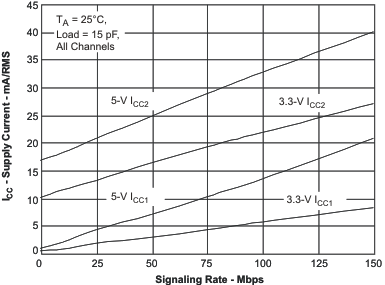 Figure 1. ISO7230C/M RMS Supply Current vs Signaling Rate
Figure 1. ISO7230C/M RMS Supply Current vs Signaling Rate
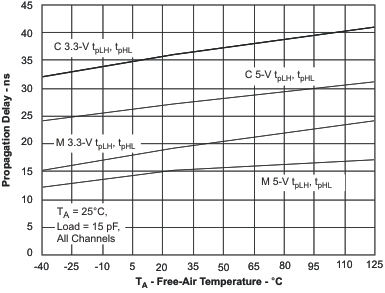 Figure 3. Propagation Delay vs Free-Air Temperature
Figure 3. Propagation Delay vs Free-Air Temperature
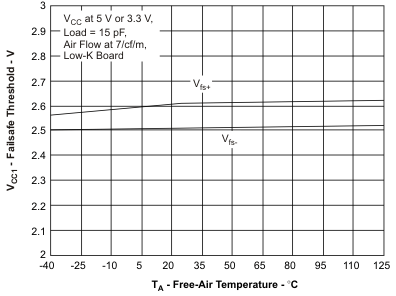 Figure 5. VCC1 Fail-Safe Threshold vs Free-Air Temperature
Figure 5. VCC1 Fail-Safe Threshold vs Free-Air Temperature
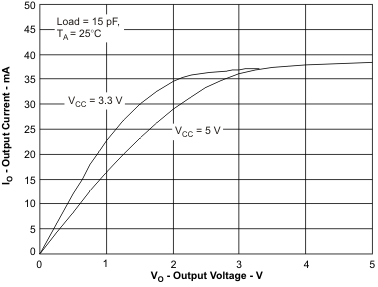 Figure 7. Low-Level Output Current vs Low-Level Output Voltage
Figure 7. Low-Level Output Current vs Low-Level Output Voltage
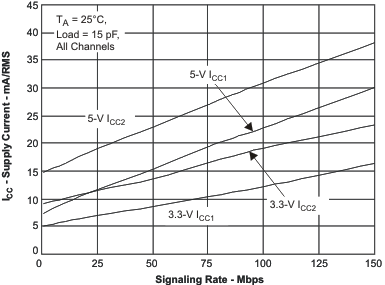 Figure 2. ISO7231C/M RMS Supply Current vs Signaling Rate
Figure 2. ISO7231C/M RMS Supply Current vs Signaling Rate
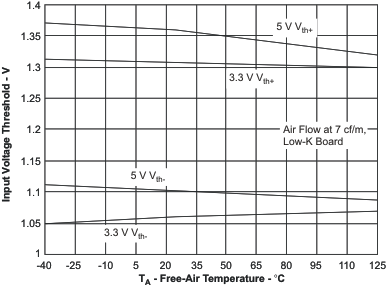 Figure 4. Input Threshold Voltage vs Free-Air Temperature
Figure 4. Input Threshold Voltage vs Free-Air Temperature
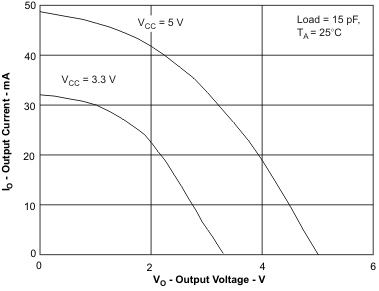 Figure 6. High-Level Output Current vs High-Level Output Voltage
Figure 6. High-Level Output Current vs High-Level Output Voltage